A high-gain electronic voltage amplifier with a differential input and, usually, a single-ended output. An active circuit element. Voltage-controlled voltage source. Aka. op-amp.
- Has 2 inputs:
- Inverting input (-)
- Non-inverting input (+)
- Has 1 output
- 2 supply terminals (usually DC):
- Positive
- Negative
- Reference/ground
The ratio between the output and the difference between the input voltages.
Equivalent circuit
Section titled “Equivalent circuit”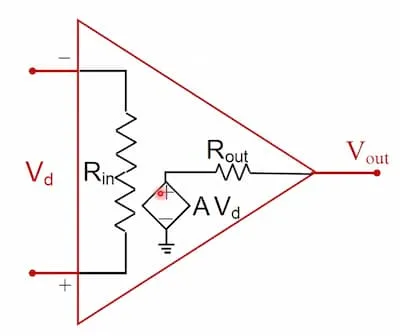
Here:
- - Input resistance, very high
- - Output resistance, very low
- - Gain, ranges from to
- - voltage difference between input terminals
- - voltage input, ranges between and
Ideal op-amp
Section titled “Ideal op-amp”- Infinite input impedance
- Zero output impedance
- Infinite gain for differential input signal ()
- Infinite bandwidth
Summing-point constraint
Section titled “Summing-point constraint”When the op-amp is negative feedback, the voltage at the inverting input terminal is equal to the voltage at the non-inverting input terminal.
Feedback types
Section titled “Feedback types”Usually op-amp circuits are designed with feedback. A feedback is a connection from the output to the input of the op-amp.
Negative feedback
Section titled “Negative feedback”The output signal is fed back to the inverting input terminal through a resistor. Gain decreases.
Positive feedback
Section titled “Positive feedback”The output signal is fed back to the non-inverting input terminal through a resistor.
Can be used to perform a variety of operations on signals, such as:
- Amplification
- Addition
- Subtraction
- Multiplication
- Division
- Integration
- Differentiation
Inverting amplifier
Section titled “Inverting amplifier”Inverts the input signal. Input signal is fed to inverting input through . Non-inverting input is grounded. Negative feedback is used with resistor.
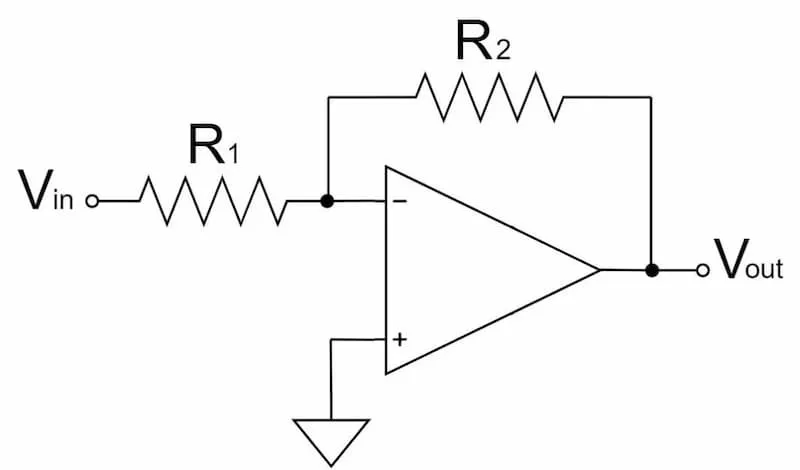
Image from Spiceman
Non-inverting amplifier
Section titled “Non-inverting amplifier”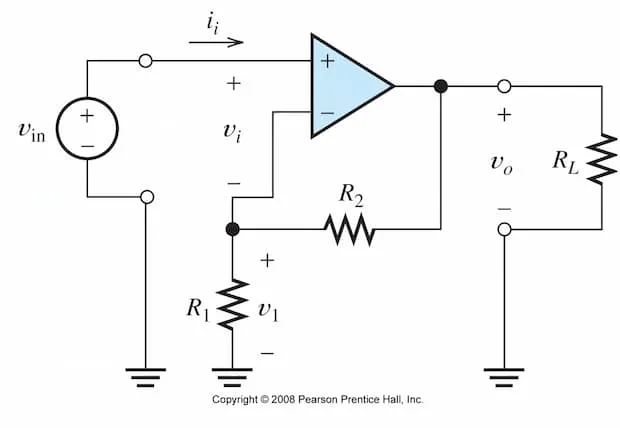
Input signal is fed to non-inverting input terminal. Inverting input terminal is grounded through resistor. Negative feedback is used with resistor. Negative feedback is used with resistor.
Here:
- - Closed-loop voltage gain
Summing amplifier
Section titled “Summing amplifier”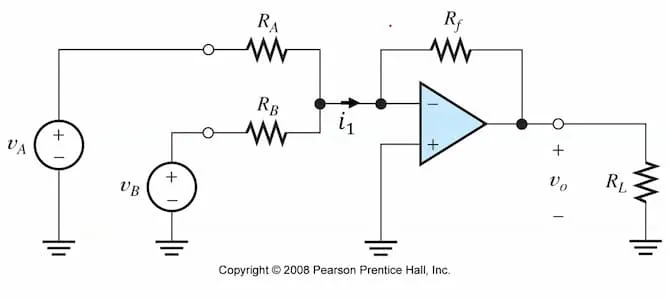
An extension of the inverting amplifier. Multiple input signals are added together.
Differential amplifier
Section titled “Differential amplifier”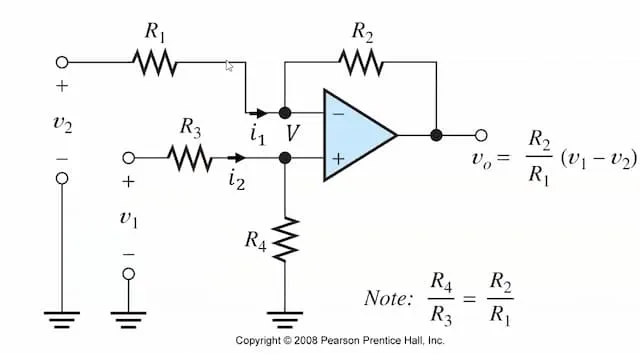
Used to amplify the difference between two input signals.
When :
Otherwise, the output must be derived.
Integrator
Section titled “Integrator”
Input is fed to inverting input terminal through a resistor . Non-inverting input terminal is grounded. Negative feedback through a capacitor. Includes a reset switch. Output is the integral of the input signal.
Differentiator
Section titled “Differentiator”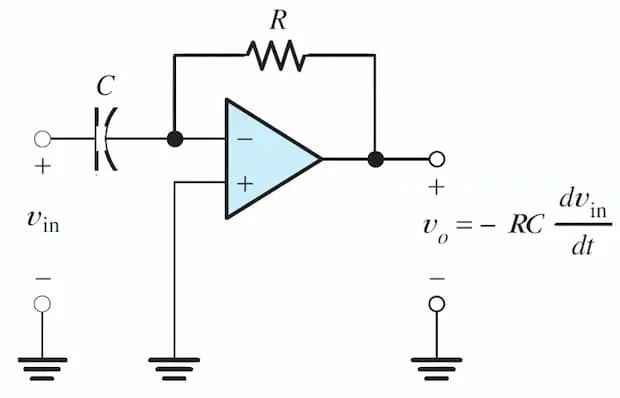
Input is fed to inverting input terminal through a capacitor . Non-inverting input terminal is grounded. Negative feedback through a resistor . Output is the derivative of the input signal.